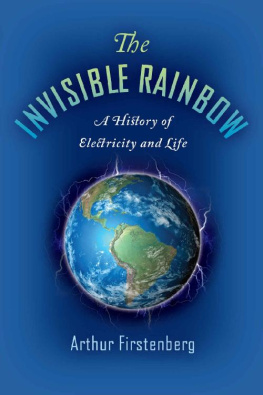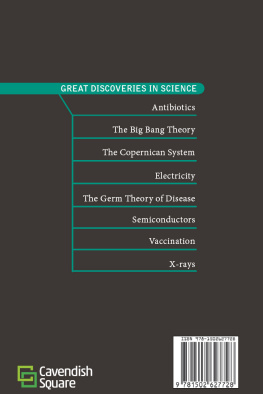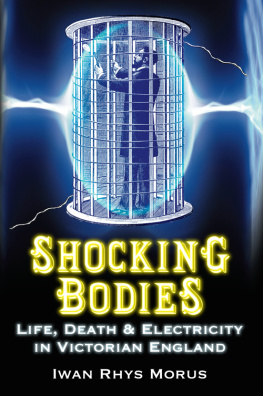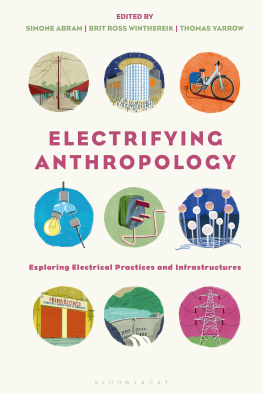The INVISIBLE RAINBOW
A History of Electricity and Life

Arthur Firstenberg
Chelsea Green Publishing
White River Junction, Vermont
London, UK
Copyright 2017, 2020 by Arthur Firstenberg.
All rights reserved.
Drawings on copyright 2017 by Monika Steinhoff.
Two bees drawing by Ulrich Warnke, used with permission.
No part of this book may be transmitted or reproduced in any form by any means without permission in writing from the publisher.
Originally published in 2017 by AGB Press, Santa Fe, New Mexico; Sucre, Bolivia.
This paperback edition published by Chelsea Green Publishing, 2020.
Book layout: Jim Bisakowski
Cover design: Ann Lowe
Printed in Canada.
First printing February 2020.
10 9 8 7 6 5 4 3 2 120 21 22 23 24
Our Commitment to Green Publishing
Chelsea Green sees publishing as a tool for cultural change and ecological stewardship. We strive to align our book manufacturing practices with our editorial mission and to reduce the impact of our business enterprise in the environment. We print our books and catalogs on chlorine-free recycled paper, using vegetable-based inks whenever possible. This book may cost slightly more because it was printed on paper that contains recycled fiber, and we hope youll agree that its worth it. The Invisible Rainbow was printed on paper supplied by Marquis that is made of recycled materials and other controlled sources.
Library of Congress Control Number: 2020930536
ISBN 978-1-64502-009-7 (paperback) | 978-1-64502-010-3 (ebook)
Chelsea Green Publishing
85 North Main Street, Suite 120
White River Junction, VT 05001
(802) 295-6300
www.chelseagreen.com
In memory of Pelda Leveyfriend, mentor, and fellow traveler.
Authors Note
FOR EASE OF READING I have kept the endnotes to a minimum. However, all sources referred to in the text can be found in the bibliography at the back of the book, together with other principal works I have consulted. For the convenience of those interested in particular subjects, the literature in the bibliography is organized by chapter, and within some chapters by topic, instead of the usual single alphabetical listing.
A.F.
Contents
ONCE UPON A TIME, the rainbow visible in the sky after a storm represented all the colors there were. Our earth was designed that way. We have a blanket of air above us that absorbs the higher ultraviolets, together with all of the X-rays and gamma rays from space. Most of the longer waves, that we use today for radio communication, were once absent as well. Or rather, they were there in infinitesimal amounts. They came to us from the sun and stars but with energies that were a trillion times weaker than the light that also came from the heavens. So weak were the cosmic radio waves that they would have been invisible, and so life never developed organs that could see them.
The even longer waves, the low-frequency pulsations given off by lightning, are also invisible. When lightning flashes, it momentarily fills the air with them, but they are almost gone in an instant; their echo, reverberating around the world, is roughly ten billion times weaker than the light from the sun. We never evolved organs to see this either.
But our bodies know that those colors are there. The energy of our cells whispering in the radio frequency range is infinitesimal but necessary for life. Every thought, every movement that we make surrounds us with low frequency pulsations, whispers that were first detected in 1875 and are also necessary for life. The electricity that we use today, the substance that we send through wires and broadcast through the air without a thought, was identified around 1700 as a property of life. Only later did scientists learn to extract it and make it move inanimate objects, ignoringbecause they could not seeits effects on the living world. It surrounds us today, in all of its colors, at intensities that rival the light from the sun, but we still cannot see it because it was not present at lifes birth.
We live today with a number of devastating diseases that do not belong here, whose origin we do not know, whose presence we take for granted and no longer question. What it feels like to be without them is a state of vitality that we have completely forgotten.
Anxiety disorder, afflicting one-sixth of humanity, did not exist before the 1860s, when telegraph wires first encircled the earth. No hint of it appears in the medical literature before 1866.
Influenza, in its present form, was invented in 1889, along with alternating current. It is with us always, like a familiar guestso familiar that we have forgotten that it wasnt always so. Many of the doctors who were flooded with the disease in 1889 had never seen a case before.
Prior to the 1860s, diabetes was so rare that few doctors saw more than one or two cases during their lifetime. It, too, has changed its character: diabetics were once skeletally thin. Obese people never developed the disease.
Heart disease at that time was the twenty-fifth most common illness, behind accidental drowning. It was an illness of infants and old people. It was extraordinary for anyone else to have a diseased heart.
Cancer was also exceedingly rare. Even tobacco smoking, in non-electrified times, did not cause lung cancer.
These are the diseases of civilization, that we have also inflicted on our animal and plant neighbors, diseases that we live with because of a refusal to recognize the force that we have harnessed for what it is. The 60-cycle current in our house wiring, the ultrasonic frequencies in our computers, the radio waves in our televisions, the microwaves in our cell phones, these are only distortions of the invisible rainbow that runs through our veins and makes us alive. But we have forgotten.
It is time that we remember.

THE EXPERIMENT OF LEYDEN was a craze that was immense, universal: everywhere you went people would ask you if you had experienced its effects. The year was 1746. The place, any city in England, France, Germany, Holland, Italy. A few years later, America. Like a child prodigy making his debut, electricity had arrived, and the whole Western world turned out to hear his performance.
His midwivesKleist, Cunaeus, Allamand, and Musschenbroekwarned that they had helped give birth to an enfant terrible , whose shocks could take away your breath, boil your blood, paralyze you. The public should have listened, been more cautious. But of course the colorful reports of those scientists only encouraged the crowds.
Pieter van Musschenbroek, professor of physics at the University of Leyden, had been using his usual friction machine. It was a glass globe that he spun rapidly on its axis while he rubbed it with his hands to produce the electric fluidwhat we know today as static electricity. Hanging from the ceiling by silk cords was an iron gun barrel, almost touching the globe. It was called the prime conductor, and was normally used to draw sparks of static electricity from the rubbed, rotating glass sphere.

Line engraving from Mmoires de lAcadmie Royale des Sciences Plate 1, p. 23, 1746
But electricity, in those early days, was of limited use, because it always had to be produced on the spot and there was no way to store it. So Musschenbroek and his associates designed an ingenious experimentan experiment that changed the world forever: they attached a wire to the other end of the prime conductor and inserted it in a small glass bottle partly filled with water. They wanted to see if the electric fluid could be stored in a jar. And the attempt succeeded beyond their wildest expectations.
Next page













